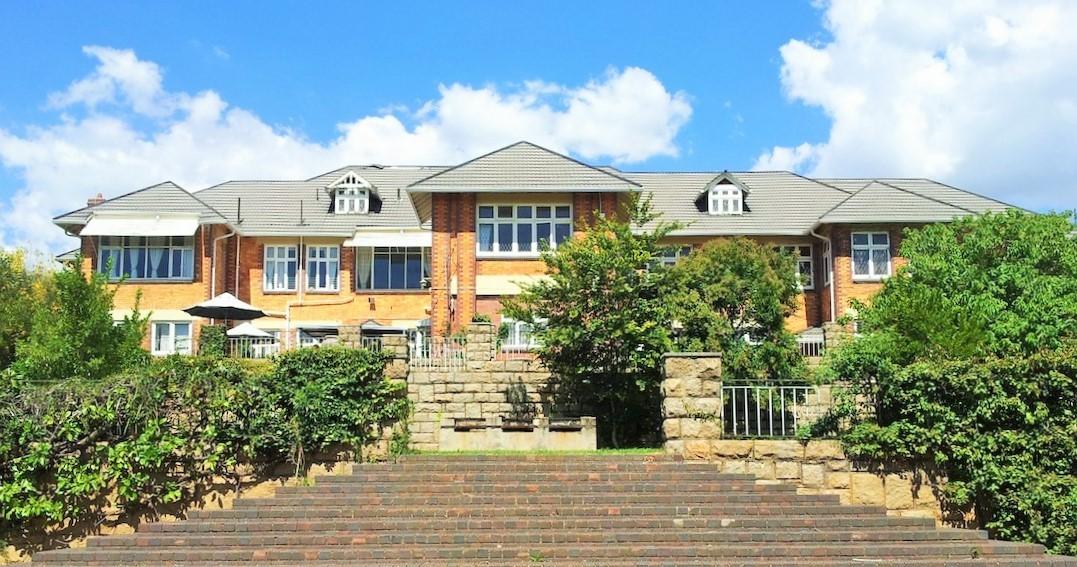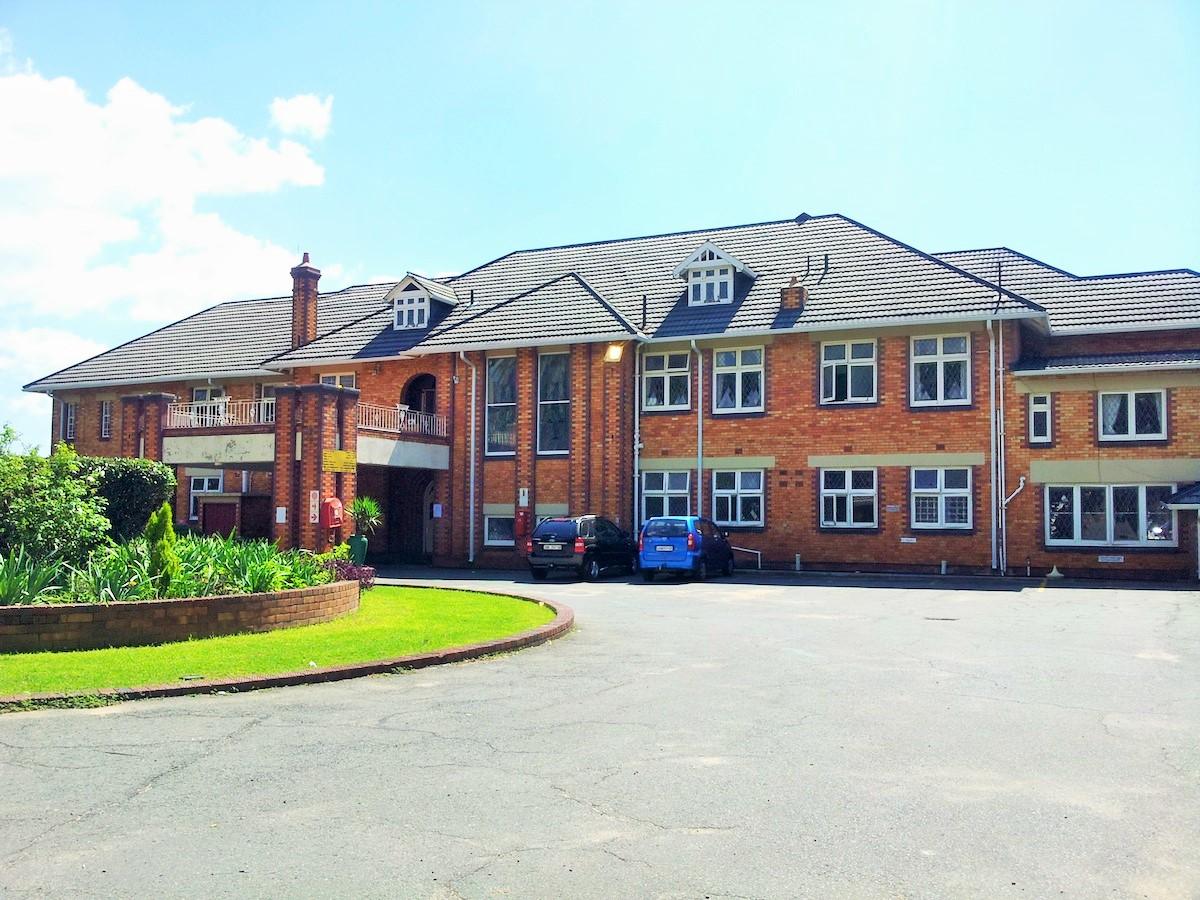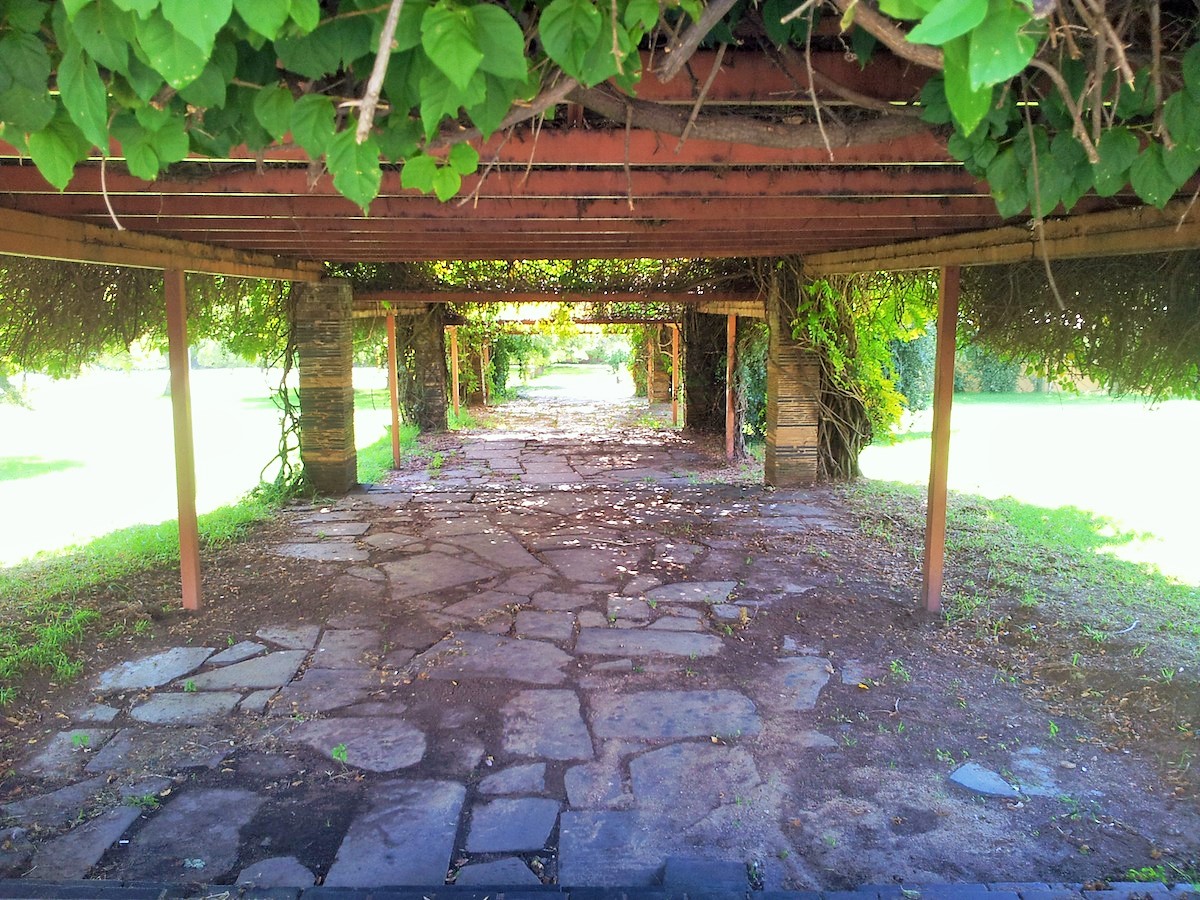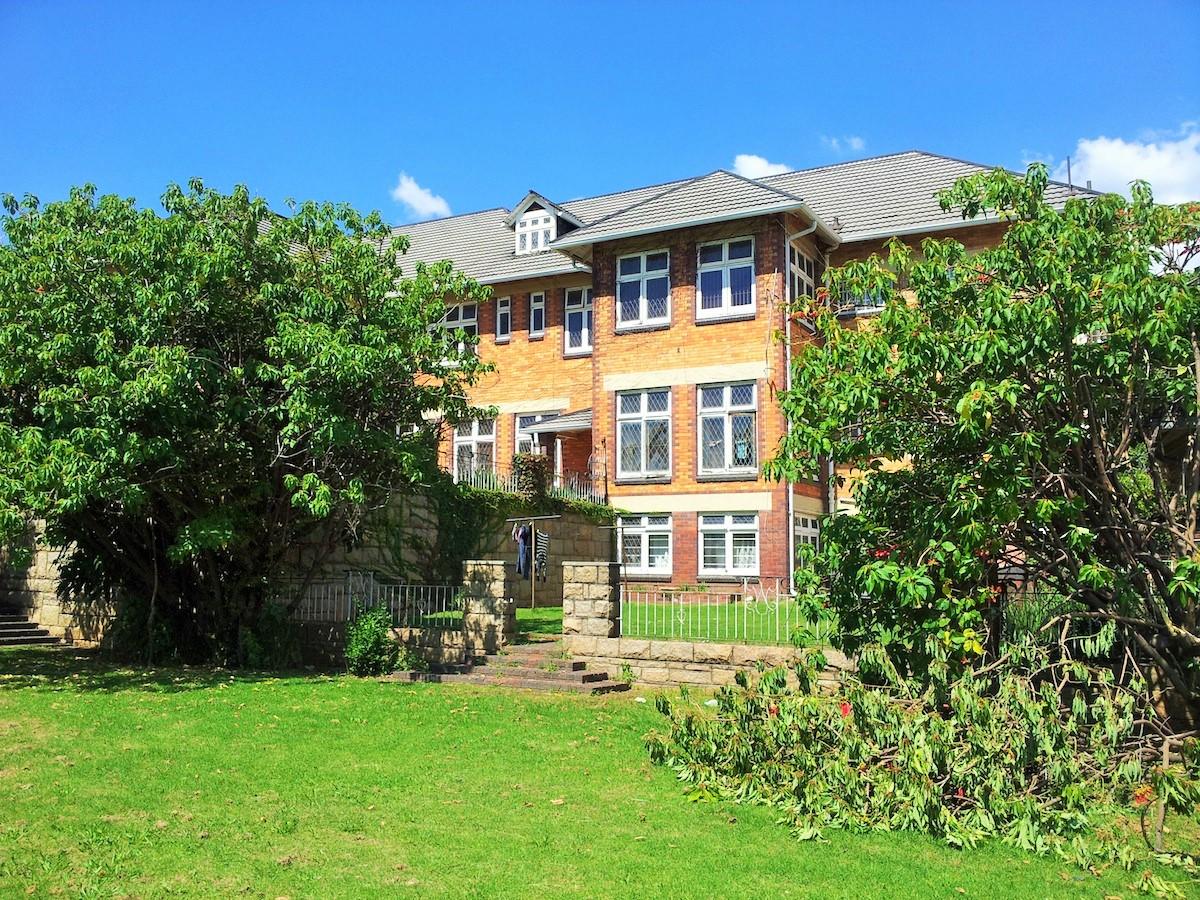
Disclaimer: Any views expressed by individuals and organisations are their own and do not in any way represent the views of The Heritage Portal. If you find any mistakes or historical inaccuracies, please contact the editor.
Below are a few edited excerpts from an article on the early history of Tara compiled by Avril Read from the Sandton Historical Association. They appeared in the Association's 1987 journal.
Tara was a large and opulent house built in the style of the 1930s, great attention being paid to the quality of materials and soundness of structure. It was approached through the majestic gates on the south side down a drive which ended in a circle under the decorated portico. There were several garages - unusual for the 30's - and the Tilletts kept two large cars, a brown Lincoln and a dark blue Dodge, both 7-seaters, with pull-out seats behind the driver. There was a European chauffeur who drove them everywhere.
The driveway and main entrance to the house (The Heritage Portal)
Moving Towards the Gardens (The Heritage Portal)
The magnificent entrance hall is fully pannelled in teak and the formal staircase, also pannelled, had stairs with shallow risers, - a concession to Mr. Tillett's cardiac condition. Apparently he always paid great attention to his health, and a lift was installed to the first floor for his benefit. This has now been removed, and the space used for the house's electrical control installations.
The hall and stairway are still pannelled in the beautiful teak, but a great deal of the pannelling in the other rooms was destroyed in a fire in the 1940's when an old radio caught fire in one of the downstairs rooms, and much of the beautiful woodwork was lost before the fire engines could save them. The pannelling in the original house had been extensive, but with the exception of the hall and stairway it was removed during the repairs after the fire, and put in the Bowling Club which was built on the north side of the house. The teak woodwork had given some of the rooms a dark aspect, and the repairs gave an opportunity to brighten parts of the house which were later being used as dormitories for patients in the hospital. The pannelling is still in the Bowling Club.
The pressed ceilings in the elegant hallway and all the main rooms are still intact, and as one goes up the splendid staircase one can admire the beautiful leaded window, with intricate shamrock designs in several colours. Another interesting Shamrock feature is a small recess for an ornament at the end of the upstairs corridor which has an arched shelf with shamrocks at either side.
Alongside the main house is a Doll's House, or Wendy House; in the same style as the main house, in brick with a tiled roof. It has bedrooms, hall, kitchen and bathroom, and even miniature telephones of its own connected with the main house. The little house had its own fence and garden too, with Tara-motif railings to match the house, as well as its own water system.
As the family grew older, Tara seemed too far out of town, so they moved to St Patrick Road, Parktown. Appropriately enough this also had an Irish name. Later they moved to the sea, to a house at Jacob's Bluff near Durban, which, of course, they also named Tara.
Tara was sold to the government in 1942 and became the Defence Force Inland High Command Headquarters for the latter stages of World War II. Towards the end of the War the property was leased to the Red Cross and Major Jack Penn's famous plastic surgery unit (previously operating at Brenthurst) was installed. When demand for plastic surgery declined Tara was transformed into a pioneering mental health hospital.
A Side View of the Main Facade (The Heritage Portal)
Comments will load below. If for any reason none appear click here for some troubleshooting tips. If you would like to post a comment and need instructions click here.



